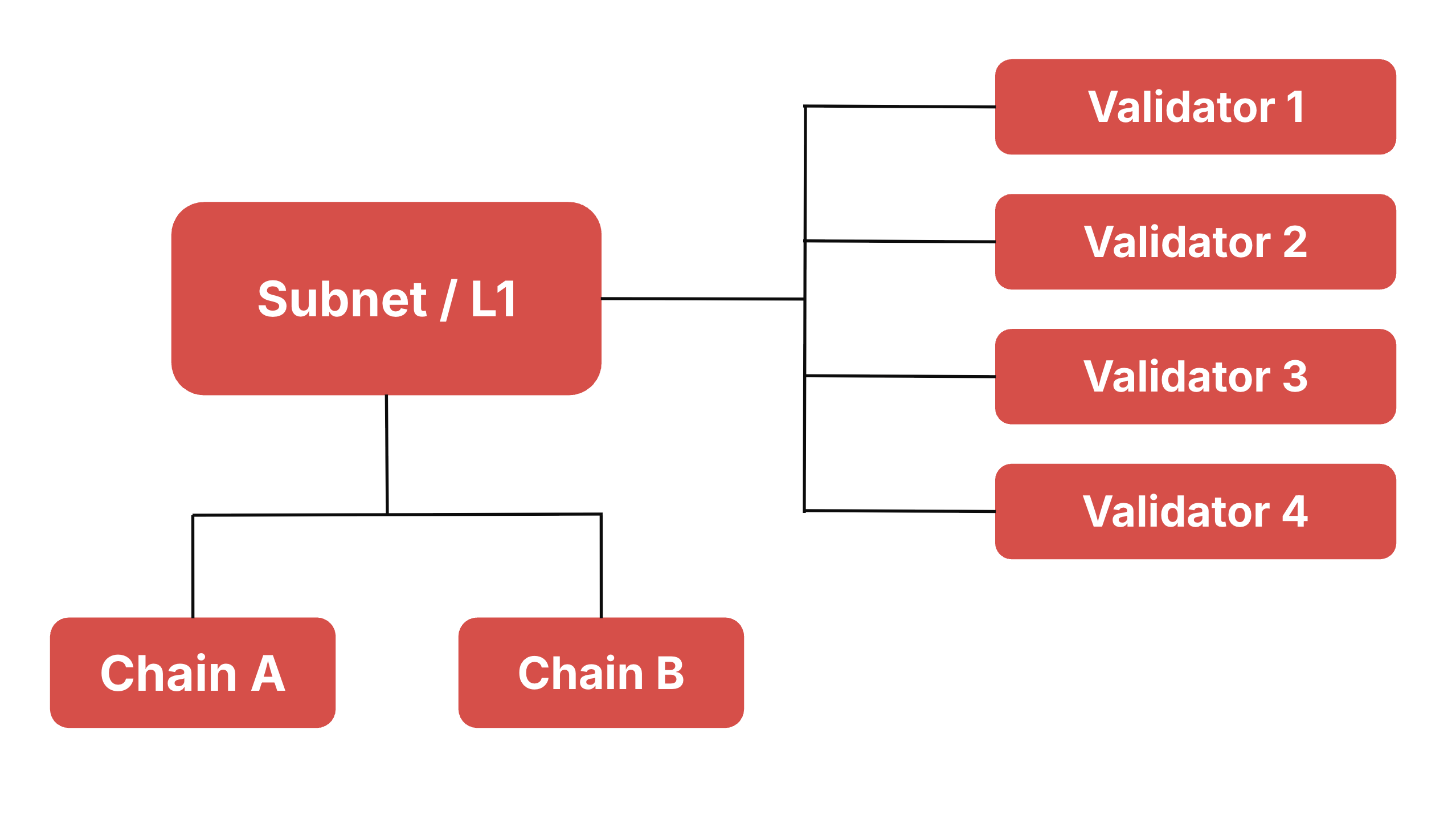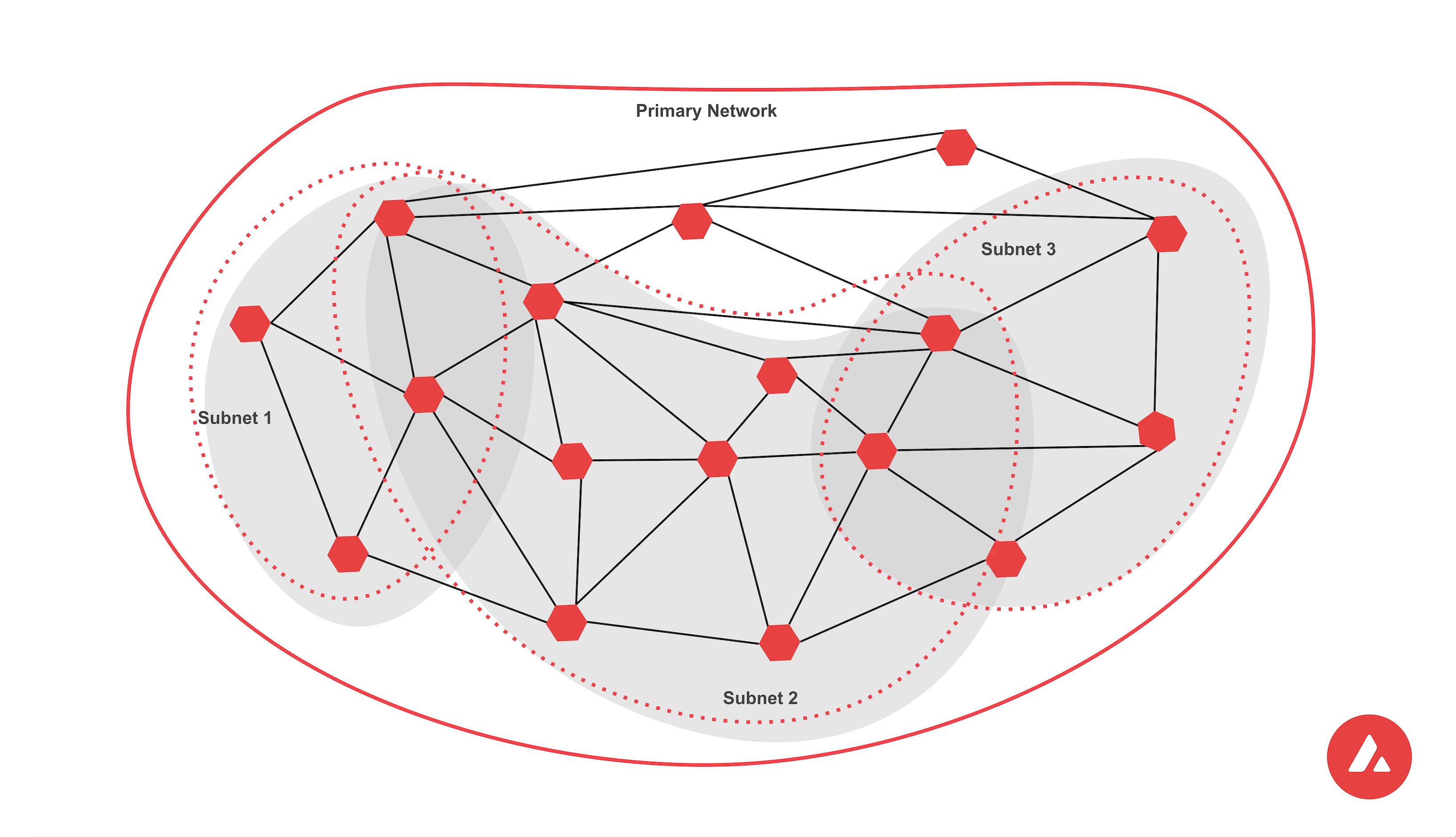P-Chain
A review of the Platform Chain.
Validators in a Multi-Chain Network
Validators are nodes of a blockchain that secure the network by validating the transactions.
Each L1 in the Avalanche network has it's own set of validators that is running the AvalancheGo client.

All validators are registered on the P-Chain with a unique node ID, public key, and stake weight, mapped to the blockchain they are validating.

Platform Chain (P-Chain)
The Platform Chain is the backbone for the native interoperability of the Avalanche network. It is a registry of all validators in the Avalanche network. This includes the validators of the Primary Network (including the X-, C- and P-Chain), as well as all L1s and legacy Subnet validators. The following graphic shows a simplified data model of the P-Chain:

Builders can create new L1 blockchains in the Avalanche Network by issuing transactions on the P-Chain. The P-Chain runs a special-purpose virtual machine called the platformvm.
It is not EVM-based and therefore to interact with it you need a compatible wallet like Core wallet.
Creating new records for L1 blockchains on the P-Chain is done by issuing transactions like the CreateSubnetTx.
The P-Chain is secured by the Primary Network validators. L1 validators are syncing the P-Chain, meaning they always have the latest view of the validator set of all blockchains in the Avalanche network, but are not participating in the consensus of the P-Chain.
Subnets/L1s vs Chains
It's important to understand that a Subnet or L1 is a validator set, while a chain is an individual blockchain instance:
- Subnet/L1: A group of validators that can validate multiple blockchains
- Chain: A single blockchain validated by exactly one Subnet
While technically one Subnet can validate multiple chains (like the Primary Network validating P-Chain, C-Chain, and X-Chain), in production it's almost always a 1:1 relationship, and we strongly recommend keeping it as such for:
- Simpler management
- Resource isolation: Each application gets dedicated validator resources, and in the scenario that multiple validators go done, at least only one chain will be affected.
Subnets
Subnets are blockchains validated by a subset of Primary Network validators.
Key technical characteristics:
- Validators must be Primary Network validators (2,000 AVAX stake requirement)
- Validators sync and validate the entire Primary Network (X, P, C chains) - takes longer to sync
- Validator set is constrained to existing Primary Network participants

L1s
L1s are blockchains with sovereign validator sets independent of the Primary Network.
Key technical characteristics:
- Validators form their own independent validator set
- Validators pay continuous fees (~1.33 AVAX/month)
- Validators only sync the P-Chain, not the entire Primary Network (faster synce time)
- No dependency on Primary Network validator participation
In the Subnet Creation section we will cover how to create an Subnet using Avalanche's Toolbox. To learn more about this architecture transition and the ACPs that enabled it, check out the ETNA upgrade.
Is this guide helpful?


